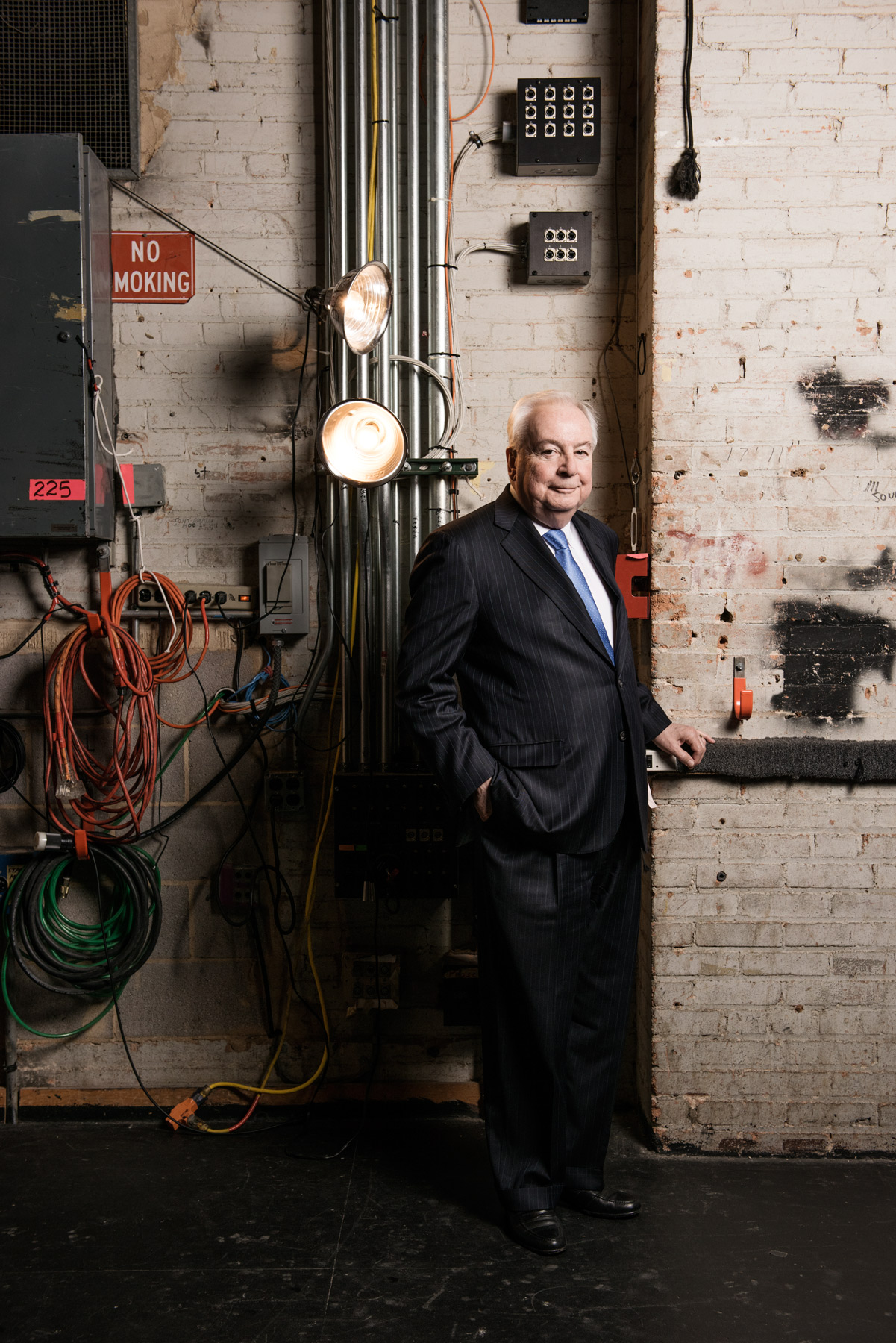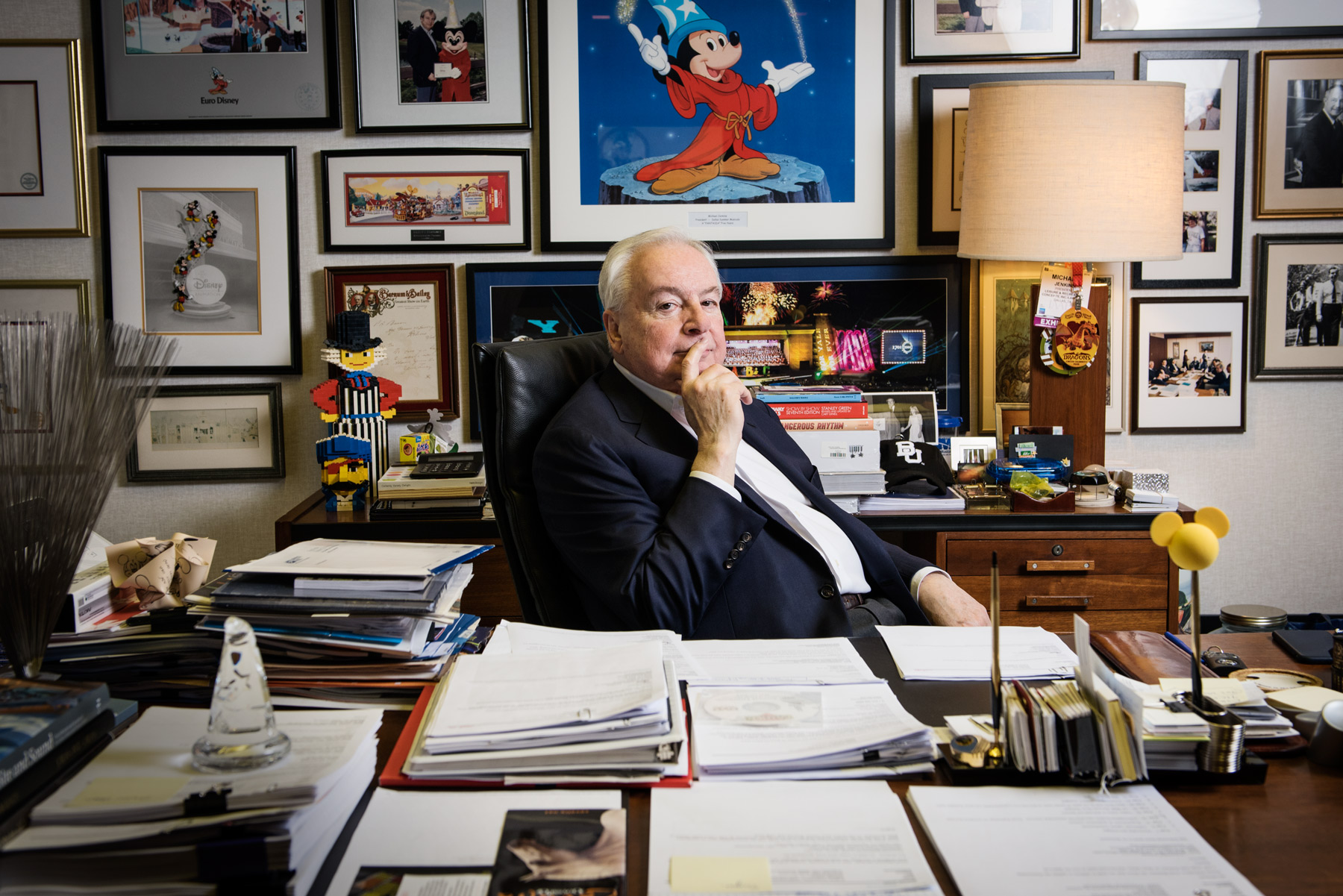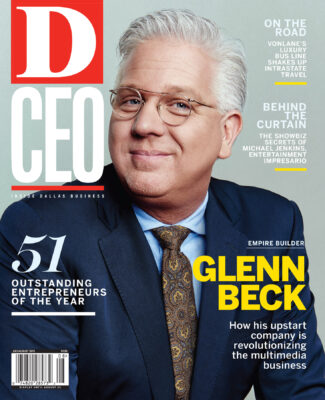Early in his work life, Michael Jenkins was cooped up in the office at Dallas Summer Musicals reading theater magazines to kill time when he came across a small ad seeking investors for a Broadway show. The minimum $5,000 investment was steep for a 17-year-old Oak Cliff kid. But Jenkins set himself to saving it up from his three summer jobs. Besides working at the musical theater in Fair Park, where he started as an usher three years earlier, he mowed lawns and landed the odd job of painting the numbers on the seats in the nearby Cotton Bowl. “There were 75,504 seats at that time,” he remembers.
By the end of the summer, Jenkins was still about $2,110 short of what he needed. His mother, who wasn’t keen on the idea of investing in theater shows but wanted to encourage him, gave him the balance and he bought his stake. “Had that show not been successful, I may not have taken the route in life that I did,” Jenkins recalls. “The show was in fact very successful. I paid my mother back, bought her a car. It paid my way through Baylor University and I got checks for 18 years. The show was the original national tour of My Fair Lady. I was interested because that year we’d been studying George Bernard Shaw’s Pygmalion in English class.”
Today, many years later, Jenkins is president and managing director of Dallas Summer Musicals, which is now celebrating its 75th year, and president and founder of Leisure and Recreation Concepts Inc., or LARC. It’s a design and consulting firm for theme parks, water parks, aquariums, special events, and other amusements. While they are two separate and distinct roles—though both involve family entertainment—the 73-year-old Jenkins has thrived in each of them.
“You give him something and he turns it into something magical,” lawyer R.J. Nutter says of Jenkins.
Jenkins used his My Fair Lady returns to study theater design at Baylor in Waco and architecture from Ray Hoeiben. He was hired by developer Angus G. Wynne Jr. to draft plans for an industrial park Wynne was building on what had been the Waggoner Ranch, between Dallas and Fort Worth. Jenkins says it was a surprise to him when Wynne told a press conference that three young men—including Jenkins—were working on plans for a theme park project in Arlington he called Great Southwestland. “That was the original name for Six Flags Over Texas,” Jenkins says. “And that was actually the third name. The second was Texas Under Six Flags.”
Wynne, who had been inspired by the recently opened Disneyland theme park in Anaheim, California, sent Jenkins and two others to apprentice with Walt and Roy Disney. They were at the Disney company for 112 days, says Jenkins, whose stories are often peppered with precise facts, like dollar amounts or exact lengths of time.
Jenkins’s offices are filled with Disney memorabilia, from portraits of Mickey Mouse to a roomful of porcelain figurines. The respect he holds for the Disney approach can be heard in his voice when talks about their ideas. “Nobody could afford to compete with Disney,” he says, recalling the planning for Six Flags. “We didn’t do animation because we’d always be second best.”
One of the more subtle, business-savvy design features of Disneyland is the way the park’s layout forces everyone to enter and exit through Main Street, which is also the park’s retailing hub. “You have to pass through it twice on the way to and from the castle,” Jenkins says, explaining how effective the design was for maximizing merchandise sales.
“We weren’t going to pay to build an $11 million castle, so we came up with a loop plan,” he says of the design for Six Flags. The team came to learn that just 2 percent of visitors stopped and retraced their steps before finishing the loop, so food and merchandise could be sold effectively all along the visitors’ expected path.
Jenkins stayed for a decade at Six Flags, where he was vice president of new projects, human resources, and all the in-park shows. His mentor from the summer musicals, the “true showman” Charles R. Meeker Jr., had gone to work for the park as well, so his education in musical theater continued.
Jenkins says it’s as much an accident as anything that he formed LARC in the early 1970s, after Wynne sold Six Flags and most of the original executives left. As he tells it, design work began coming his way and an artist he’d met at Disney pushed him to jump into the business—and to give that artist a job.
To date, Jenkins says, the company, which has offices in Dallas and Tokyo, has worked on 1,097 projects in 48 countries. Its full-time staff (including specialty consultants) numbers about 20, with most working out of the Dallas headquarters on Fort Worth Avenue in North Oak Cliff. They provide market studies and other research, design, financial analysis, and management for a wide variety of projects in the leisure field.
“People come through that door with things they think are the greatest ideas, and I’m the one who has to tell them what they need to hear,” Jenkins says. “We had a guy who wanted to build an Egyptian pyramid in Arlington, with students he’d hire hauling these Styrofoam blocks up the side, 15 stories high. Another guy had an idea for a park where everyone would ride horses, and he projected he’d get about 20,000 people a day. We said, ‘That’s not gonna happen. You’re not going to be keeping 20,000 horses.’ There was a plan to build a winter wonderland in downtown Dallas, where all the street lamps and telephone poles would be made over to look like icicles. Those are some of the more bizarre ones.”
Jenkins’ current projects include work on the redevelopment of St. Louis’ Union Station, a massive late-19th century railroad station that was turned into a hotel and shopping complex in the 1980s. “Over a period of time, that kind of failed. It became t-shirt shops and tattoo parlors,” he says, adding that its new owners, a St. Louis hotel company, recently purchased the property and hired LARC to plan its future. “It’s going to be a collection of entertainments, things like a climbing wall and a train exhibit with a 22-story Ferris wheel with enclosed gondolas sticking through the roof,” Jenkins says.
R. J. Nutter, a Virginia lawyer who has been working with Jenkins on development projects, says Jenkins’ ideas about multi-faceted entertainment venues are gathering interest from owners of racetracks, shopping malls, and stadiums that have large, underutilized spaces. Jenkins, he says, can latch onto an idea “like a little kid. It’s just like a Walt Disney. You give him something and he turns it into something magical. It’s a talent that just oozes out of him. He has this unbounded, youthful way of looking at things.”
♫ ♫ ♫

Jenkins was well-established at LARC when, in late 1994, board members from the Dallas Summer Musicals asked him to step in and save the upcoming season after the death of Tom Hughes, who had been managing director for more than three decades. Hughes headed the nonprofit organization as it produced touring shows that went on to become successful Broadway engagements, with stars such as Carol Channing, Sandy Duncan, and Herschel Bernardi.
Jenkins says he promised to stay for one season and gave one condition: “I get to pick the shows and live and die on my own decisions.” Twenty-one years later, he has four Tony Awards for shows on Broadway in New York and has kept Dallas Summer Musicals running and solvent, in part by finding ways to cut the inherently high costs and high risks of musical theater productions.
“Unlike the stock market, you’re going to know real fast whether you have a hit or you’re gonna write it off,” says Jenkins. As of this spring, with the opening of An American in Paris, he’s co-produced or invested in 135 shows on Broadway. “That’s where all this gray hair comes from,” he jokes. Of those, he says, 91 have come out ahead, 40 lost money, and four are still running. “It’s like the grocery business,” he adds. “Very low margins and a lot of risk.”
Right now it costs anywhere from $12 million to $15 million to put on a Broadway musical, Jenkins says. In Dallas, “Every night the orchestra plays it costs $104,000, whether anybody is in those seats or not,” he says.
To bring a show to Dallas from New York costs about $1 million per week, he says, “by the time you pay for everything from ushers to insurance.” So teaming up with other regional theaters in places like Houston, Kansas City, and Los Angeles makes it more viable. Locally, he says, instead of seeing Bass Hall in Fort Worth as a competitor, DSM joined up with it last year, so a show will now run several weeks in Dallas and several in Fort Worth. “We split marketing costs and get greater efficiencies for both of us,” he says.
In 2005, Jenkins assembled various bite-sized reminiscences and funny tales from his life of travels into a book, Playbills and Popcorn, published by Eakin Press in Austin. Jimmy Nederlander, a major Broadway producer and theater owner, wrote the foreward, in which he said of Jenkins: “Michael’s not your everyday impresario. There’s no bluster, no flamboyance, no ‘look at me.’ He’s quiet and thoughtful—although he can be a bulldozer when he has to be. He gets things done and he makes tough choices.”
Jenkins’ wife, Wendy, who works with him at LARC on marketing and tourism development, says her husband has a keen instinct for what people will like. “He has an uncanny ability that way, but in his head he’s always running the numbers,” she says.
This spring, for instance, he made an overnight trip to Toronto to see the musical The Heart of Robin Hood. Wendy says the trip was typical for her husband: “He went up late one day, saw the show, and left the next morning at 6 a.m. He’s got that kind of drive. He thrives on it. It’s the sheer love of what he does.”
Jenkins says he travels to New York every two weeks and, as a Tony Awards voter, “I have to see all the shows. That’s 34 theaters.” No wonder he’s one of American Airlines’ most frequent fliers, with “Executive Platinum” status and nearly 8 million miles with the carrier under his belt.
Jenkins’ own Tony Awards include wins for investing in Kinky Boots, which won Best Musical in 2013, and Memphis, which won Best Musical in 2010, as well as for producing Boeing-Boeing, which won Best Revival of a Play in 2008, Jay Johnson: The Two and Only!, the Best Theatrical Event of 2007, and Thoroughly Modern Millie, which won Best Musical in 2002. His wife predicted that with universally positive reviews, An American in Paris, based on the 1951 film, would be likely to earn him yet another Tony in June—after this issue of D CEO went to press. Which would only be fitting; after all, Walt Disney won a lot of Oscars, too.






